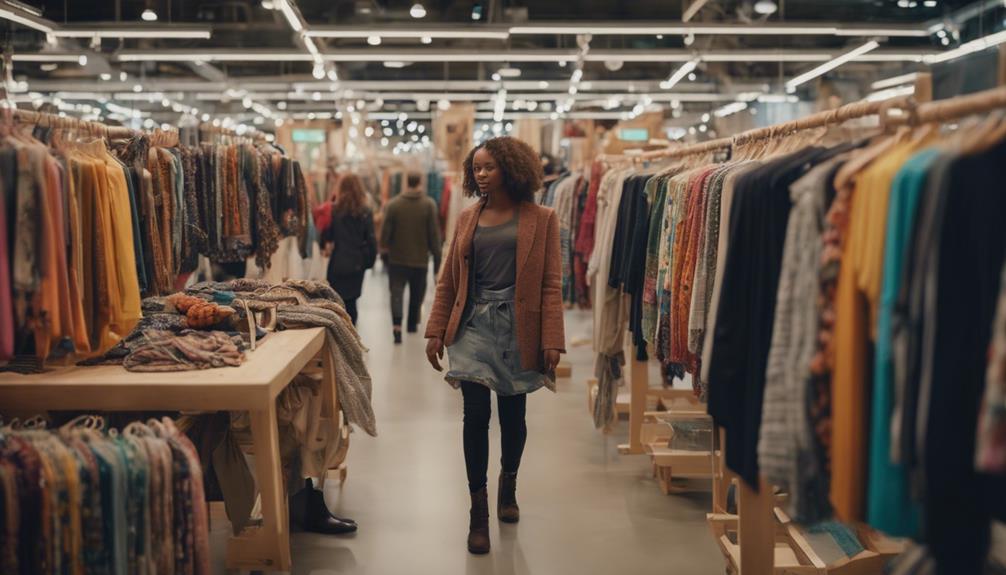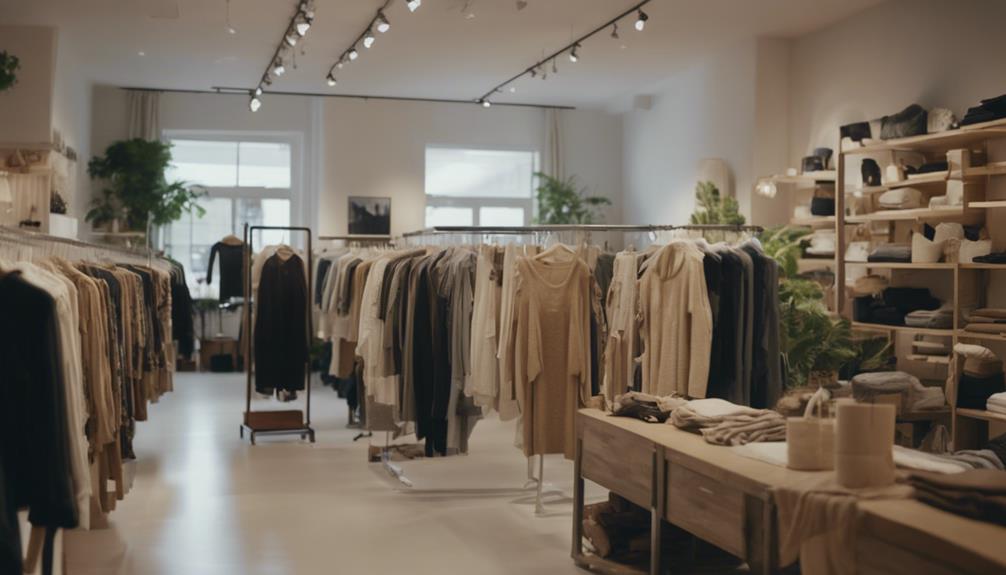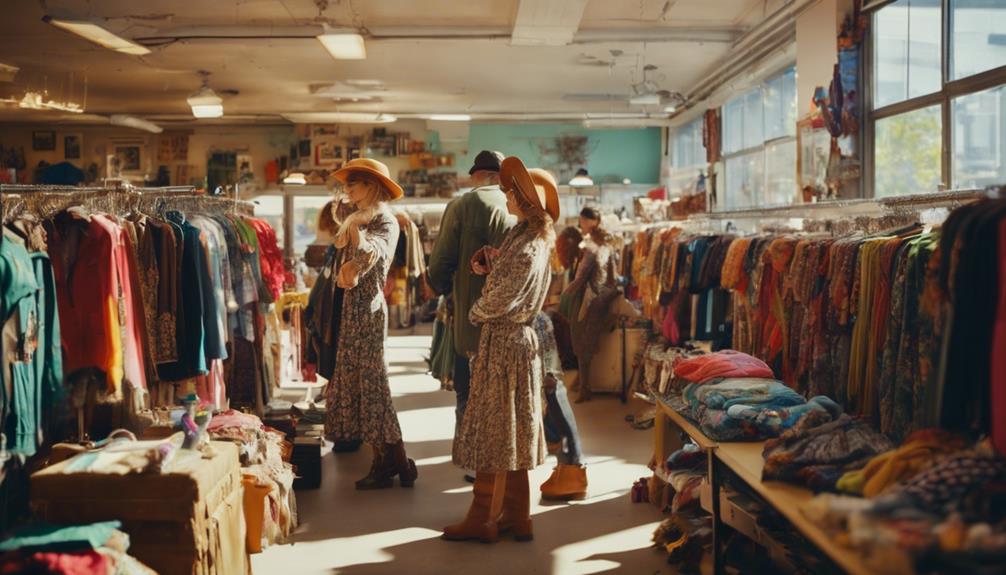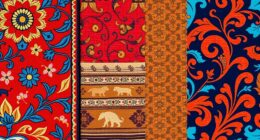The growth of the sustainable fashion market is truly remarkable. As of 2023, it is valued at $7.8 billion and is projected to reach an impressive $33.05 billion by 2030, with an annual growth rate of 22.9%. This increase highlights the growing demand for eco-friendly options; 66% of shoppers are willing to pay extra for sustainability. Leading brands like PANGAIA and Vuori are spearheading this movement. With advancements in biodegradable fabrics and a push for transparency, this industry is evolving rapidly. If you’re interested in what this means for the future, stay tuned for what’s coming next.
Key Takeaways
- The global sustainable fashion market is valued at $7.8 billion in 2023 and expected to reach $33.05 billion by 2030.
- The sustainable apparel market is projected to grow from $11.2 million in 2023 to $27.2 million by 2033.
- North America accounted for 36% of the sustainable fashion market share in 2020.
- 66% of shoppers are willing to pay a premium for eco-friendly products, reflecting growing consumer demand.
Current Market Size and Growth
The global sustainable fashion market is booming, currently valued at around $7.8 billion in 2023 and expected to soar to $33.05 billion by 2030. This impressive growth reflects a compound annual growth rate (CAGR) of 22.9%, markedly outpacing traditional fashion markets.
The sustainable apparel market, specifically, is predicted to expand from $11.2 million in 2023 to $27.2 million by 2033, driven by strong consumer demand for eco-friendly clothing options.
North America plays a vital role in this growth, accounting for 36% of the sustainable fashion market share in 2020. As consumers increasingly prioritize sustainability, brands are taking notice and adjusting their offerings.
The ethical fashion market, valued at approximately $7,548.2 million in 2022, is also on the rise, with a forecasted growth rate of 6.5%, expected to reach $11,122.2 million by 2027.
This shift toward sustainable fashion signals a fundamental change in how you view and purchase clothing. With growing awareness and accessibility, the sustainable fashion market is set to reshape the industry landscape, providing you with more choices that align with your values.
Consumer Attitudes and Trends

Willingness to invest in sustainable brands is reshaping consumer attitudes, with 66% of shoppers ready to pay a premium for eco-friendly products. This trend is especially pronounced among millennials and Gen Z, with 73% of these younger consumers preferring sustainable options over conventional ones. You might notice that your shopping habits are evolving; 50% of consumers report changing their choices to prioritize sustainability.
As you consider your purchasing decisions, it's essential to recognize that 57% of shoppers now factor in environmental impact. This growing awareness drives a commitment to ethical consumption, leading to a significant shift in how brands are perceived. Transparency in supply chains plays a pivotal role, influencing 94% of shoppers. This means that you're not just looking for sustainable fashion, but also for brands that openly communicate their sustainability efforts.
In this climate, your preferences reflect a broader movement toward eco-friendly products. By choosing sustainable brands, you contribute to a collective demand for responsible fashion, impacting industry standards and encouraging more brands to adopt ethical practices. Your choices matter, and they're shaping the future of the fashion market.
Key Companies and Initiatives

As consumer demand for sustainable options grows, key companies and initiatives are stepping up to lead the charge in reshaping the fashion industry. Major sustainable fashion brands like Vuori, PANGAIA, Outerknown, ABLE, and Hanesbrands Inc. have captured significant market share while prioritizing eco-friendly materials and sustainable practices. These brands are committed to reducing their environmental impact and minimizing their carbon footprints through innovative strategies.
The Fashion Pact is one such initiative uniting industry stakeholders in their dedication to sustainability, encouraging collaboration to drive positive change across the fashion supply chain. Certifications like GOTS (Global Organic Textile Standard) are essential for brands aiming to establish credibility, ensuring that their products meet rigorous sustainability criteria.
Technology also plays a critical role in this transformation. Brands are leveraging blockchain for enhanced transparency in their supply chains, allowing consumers to trace the origins of their clothing. Additionally, artificial intelligence is being used to optimize resource management and reduce waste.
Together, these efforts reflect a growing commitment to sustainable fashion and demonstrate how the industry is evolving to meet the demands of conscious consumers.
Challenges Facing Sustainable Fashion

Steering through the challenges in sustainable fashion requires a clear understanding of the industry's hurdles, including a lack of standards and high material costs that can deter consumer purchases.
Without established sustainability standards, it's tough for brands to promote authentic practices, leading to confusion among consumers. High costs associated with sustainable materials often result in increased prices, impacting market growth and making it harder for consumers to commit to sustainable choices.
Moreover, sourcing sustainable materials presents significant challenges. Companies must navigate complex supply chains that can be affected by geopolitical issues and resource availability. This can lead to delays and increased costs, further complicating the journey toward sustainability.
Another major issue is greenwashing, where brands mislead you about their sustainability efforts, which erodes trust and makes informed purchasing decisions difficult.
Limited consumer awareness and understanding of sustainable fashion practices also play a role, with nearly half of consumers unsure where to find sustainable brands.
Addressing these challenges is essential for fostering a more transparent and trustworthy market that promotes genuine sustainability while alleviating environmental concerns.
Future Projections and Innovations

The future of sustainable fashion looks promising, with the market projected to grow considerably as consumer demand for eco-friendly products continues to rise. By 2030, the sustainable fashion market could reach $33.05 billion, reflecting an impressive compound annual growth rate of 22.9% in the sustainable apparel segment. This growth is fueled by increased consumer awareness and a shift towards environmentally responsible practices.
Innovations in sustainable materials, like biodegradable fabrics and recycled textiles, are emerging as essential factors driving this market growth. As brands invest more in research and development, you'll see a wider variety of eco-friendly products available. The rise of circular fashion models emphasizes reuse, recycling, and upcycling, which will reshape the industry and create new opportunities while minimizing waste.
Furthermore, regulatory frameworks encouraging sustainable practices are expected to support the mainstream adoption of these eco-friendly initiatives. As you become more aware of the impact of your purchasing decisions, your preference for sustainable options will help propel this industry forward. Embracing these changes won't only benefit the environment but also promote a more responsible and ethical approach to fashion.
Frequently Asked Questions
How Big Is the Sustainable Fashion Market?
You'll find the sustainable fashion market's growth impressive. Valued at about $7.8 billion in 2023, it's projected to reach over $33 billion by 2030, highlighting the rising demand for eco-friendly practices and products.
How Many People Prefer Sustainable Fashion?
You'll find that a significant portion of consumers prefers sustainable fashion. In fact, 66% are willing to pay more for eco-friendly brands, and 73% of millennials actively choose sustainable products over traditional options.
What Is the Target Market for Sustainable Fashion?
In the world of fashion, "you reap what you sow." Your target market includes environmentally conscious millennials and Gen Z, who prioritize sustainability and transparency, driving demand for ethical brands and responsible purchasing practices.
What Are the Statistics for Sustainable Brands?
You'll find that 66% of global consumers are willing to pay more for sustainable brands, and 73% of millennials prefer eco-friendly options. The ethical fashion market is projected to grow considerably in the coming years.
Is the Growing Sustainable Fashion Market Making Eco-Friendly Clothing More Affordable?
The sustainable fashion affordability truth is that the growing market for eco-friendly clothing is making it more accessible to consumers. With more brands embracing sustainable practices and materials, the cost of eco-friendly fashion is becoming more reasonable. As demand increases, the industry continues to make strides towards affordability.
Conclusion
Sustainable fashion is booming, and you might be surprised to know that the market was valued at over $6 billion in 2021, with projections to reach nearly $9 billion by 2025.
This growth reflects a significant shift in consumer attitudes, as more people prioritize eco-friendly choices.
However, challenges still exist, and the industry must innovate to keep pace.
Embracing sustainable practices not only benefits the planet but can also be a savvy move for your wardrobe!









